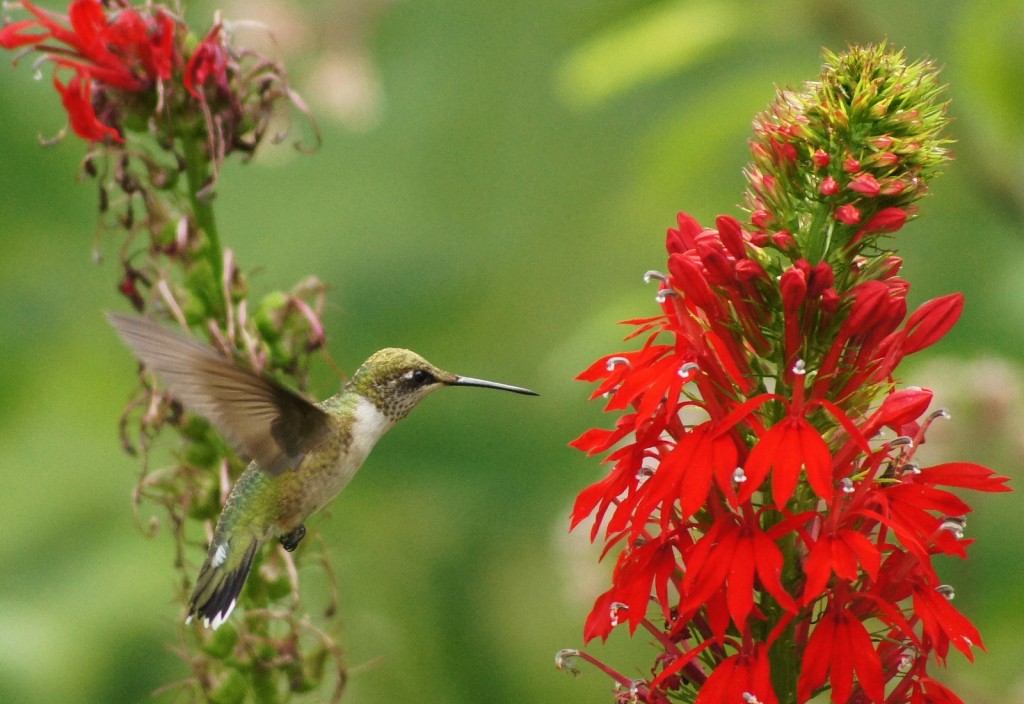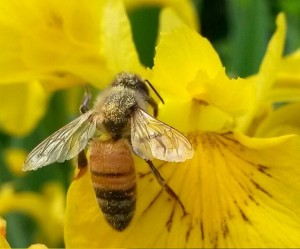Pollinators: Bee Friendly

Birds are active pollinators, just like bees, butterflies and moths. Photo by Mike Di Leo
The status of pollinators is sad, but true: America is losing pollinators at a remarkable rate. Pollinators are honeybees, wild bees, beetles, wasps, butterflies and moths, as well as birds and bats that transfer pollen in and between flowers of the same species. The efforts typically lead to fertilization for seed and fruit production, which directly impacts our food chain. In fact, it’s estimated that one in every three bites that humans consume is a byproduct of a pollinator’s work! Over time, pollinators also impact our ecosystem’s diversity, stability and conservation.
So who or what is endangering our pollinators? Natural stressors like diseases, predators and parasites take their toll. Extreme weather conditions, such as below-average temperatures, can diminish and even eradicate pollinator populations. However, man and his actions may be the greatest threat to pollinator survival. While herbicides and insecticides can maximize agricultural production and improve our comfort through reduction of pesky insects, chemical overuse and misuse negatively impact pollinators and their habitats. For example, when a plant absorbs a systemic pesticide, the chemicals are distributed throughout the plant’s tissues. The entire plant becomes toxic, including the pollen and nectar on which pollinators feed. Foliage pesticides can be problematic, too, since they leave a residue on the surface of a plant that makes it potentially toxic for pollinators that come in contact. Continued land development that reduces or eliminates forests, meadows and wetlands further stresses pollinators’ wellbeing and repopulation. Pollinator-friendly and nectar-producing plants are reduced, as are pollinator-friendly sites for foraging, shelter and nesting.
In 2014, Pres. Obama issued a memorandum in response to the country’s growing and widespread pollinator crisis. He called for a national strategy to promote the health of honeybees and other pollinators and encouraged public-private partnerships to help reverse losses and restore pollinator populations. The call to action cited the need for industry and community education about pollinators, nectar-producing plants and healthy ecosystems. Since the announcement, garden organizations, researchers, educators and businesses have collaborated to further research the causes of decline, draw attention to the issues and solicit positive action on a national scale.
What can you do?
Join the effort to help attract, protect and increase pollinator populations, perhaps starting with The Million Pollinator Garden Challenge. With a goal of counting one-million forage locations over the next two years, the national Challenge encourages homeowners, organizations, public and private gardens to plant and preserve more flowering plants and trees in their gardens, woodlands and landscapes. Especially important are sustainable gardens with various colorful blooms that attract birds and insects and native plants that support native bees and monarch butterflies.
The Challenge’s website provides resources about other eco-friendly practices focused on the health of bees, butterflies, birds and bats, as well as their habitats and ecosystems. It also recommends watching for free plant and seed offers and supporting pollinator-friendly businesses. Once you take an active role, you also can register and “BEE counted” on the Challenge’s S.H.A.R.E. (Simply Have Areas Reserved for the Environment) online map. Just as importantly, you can help spread the word and encourage others to take part in America’s “polliNATION” efforts.

Lewis Ginter Botanical Garden, a registered participant in The Million Pollinator Garden Challenge, strategically includes nectar and pollen-producing plants across its landscape. A demonstration beehive also is part of the Garden’s 2016 plans. Photo by Jonah Holland
Editor’s Note: This article first published on Richmond.com in August, 2015.
